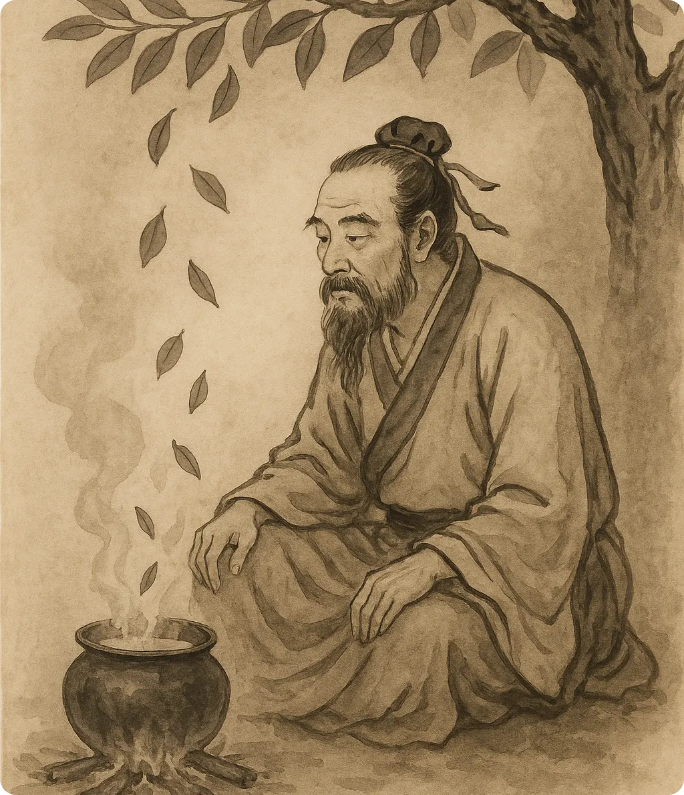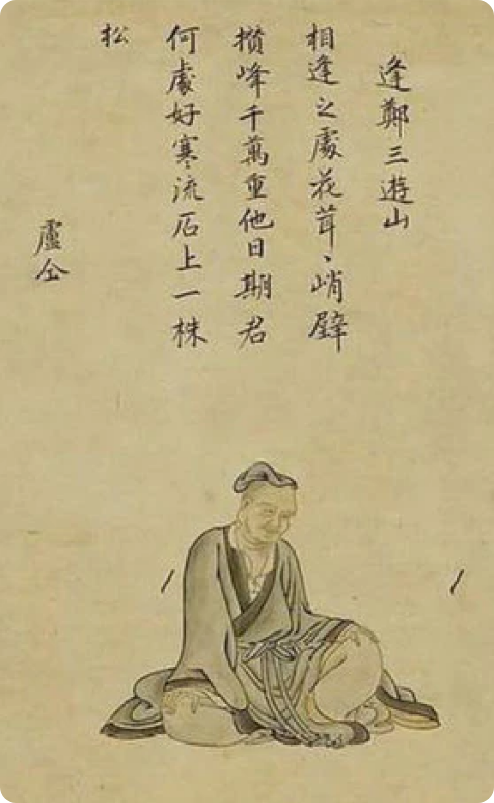the history of chai
The history of chai is more than just a story of tea — it’s a ritual that brings people together. From India’s bustling chai stalls to Turkey’s misty tea hills and family kitchens everywhere, tea has shaped cultures for centuries. Once a rare treasure traded along the Silk Road, its story is woven with myth, royalty, and discovery, evolving into the world’s most cherished drink after water.
Ancient Roots & Myths in the History of Chai
The origins of tea are wrapped in legend:

China (2700 BCE): Emperor Shennong discovered tea when wild leaves drifted into his pot of boiling water.
Japan: Zen monk Bodhidharma chewed tea leaves to stay awake during meditation, inspiring the Japanese tea ceremony.
India: Some link tea to the Ramayana, where the healing sanjeevani booti echoes the tea shrub; others suggest tea may have been the soma mentioned in the Vedas.
Assam Tribes: Communities like the Singhpho and Khamti brewed tea leaves for digestion and medicine long before it became a beverage.
The Seven Bowls of Tea
During the Tang Dynasty, tea wasn’t merely a drink – it was a spiritual experience, a meditation, a connection to something greater. Lu Tong (795 AD), a revered tea scholar and poet, captured this transcendent quality in his famous poem “The Seven Bowls of Tea.”
Lu Tong preferred a quiet life in the mountains of Hunan Province, drinking tea and writing poems under the name “Master Jade Spring.” He understood tea not just as a beverage, but as something that could touch the very essence of one’s soul. His poem describes the progressive journey of drinking seven bowls of tea, each one bringing the drinker closer to enlightenment:

- “The first cup caresses my dry lips and throat.
- The second shatters the walls of my lonely sadness.
- The third searches the dry rivulets of my soul to find the series of five thousand scrolls.
- With the fourth the pain of past injustice vanishes through my pores.
- The fifth purifies my flesh and bone.
- With the sixth I am in touch with the immortals.
- The seventh gives such pleasure I can hardly bear.
- The fresh wind blows through my wings,
- As I make my way to Penglai the mountain of the immortals.”
The Rise and Fall of the Tea Monopoly
By the 1600s, tea had begun its journey across the globe, with China holding a powerful monopoly over the precious Camellia sinensis plant. When Dutch traders introduced it to Europe, the drink quickly captured attention — and it was Catherine of Braganza, a Portuguese princess who married England’s King Charles II, whose love of tea made it a fashionable obsession among the English aristocracy. As Britain expanded its empire, the tea trade became not only a symbol of status but also a driving force of global power.
By the 1800s, however, China’s monopoly began to unravel. Silver made tea too costly, so Britain turned to trading Opium instead — a devastating decision that triggered widespread addiction in China. In 1839, one Chinese official rebelled, destroying shipments of British Opium and sparking the First Opium War. The Qing Dynasty’s forces were no match for Britain’s military strength, leading to the loss of Hong Kong and the forced opening of China’s ports. With its ancient barriers broken, China’s long-guarded tea secrets fell into foreign hands, forever altering the future of the global tea trade.
Tea comes to India: : A Turning Point in Chai’s History
In the 19th century, Britain’s growing fascination with tea led the East India Company to look for ways to cultivate it closer to home. Until then, China had guarded its tea secrets carefully, keeping a firm hold on global production. To learn more, Scottish botanist Robert Fortune journeyed through China’s tea-growing regions, studying cultivation methods and bringing back knowledge, seeds, and skilled growers to British-ruled India.
Although a wild variety of Camellia sinensis already thrived in Assam, the humid climate proved unsuitable for the Chinese plants. This discovery encouraged deeper research into India’s own native tea bushes. The India Tea Committee helped refine methods of cultivation and processing, blending local plants with techniques inspired by Chinese traditions. Vast plantations soon flourished in Assam and Darjeeling, and by the early 1900s, India had become a global leader in tea production, gradually overtaking China’s dominance in world trade.
Yet, in those early days, tea was not immediately embraced by the people of India. It was seen as costly and somewhat bitter, enjoyed mostly by colonial society. To change this, the India Tea Committee began introducing tea to the wider population through festivals, railway stations, and workplaces, where free tastings and demonstrations were held. Slowly, tea found its place in daily life, promoted as the perfect partner to breakfast and an energizing pause during the working day. Over time, this cultural shift laid the foundation for India’s own unique tea traditions, eventually giving birth to the beloved spiced brew we now know as chai.
Spread of chai
Following the British establishment of large-scale tea plantations in India, tea became more accessible to Indians across the economic spectrum. However, Indians did not simply adopt British-style tea. Instead, they began to brew it in their own unique style, blending strong black tea with milk, sugar, and a variety of indigenous spices such as cardamom, ginger, cloves, cinnamon, and black pepper. This spiced milk tea became known as masala chai, or simply “chai.”
Chaiwallahs-street vendors who sold tea-became iconic figures in Indian society. From bustling train platforms to quiet village corners, chaiwallahs served fresh, steaming cups of chai to people from all walks of life. These humble tea sellers became gathering points, places where strangers would stop, sip, and share stories. Over time, chai transcended its role as simply a beverage; it became woven into the very fabric of Indian social life, marking moments of rest, conversation, reflection, and connection.
Chai – A Symbol of Freedom and Culture in India’s History

Tea and chai took on deeper cultural and political meanings as India moved toward independence. The anti-colonial movement embraced chai as a symbol of Indian identity, a rejection of British customs and economic dominance. Chaiwallahs and street vendors became symbols of resilience and grassroots entrepreneurship, representing the everyday people who built the nation from the ground up.
By the time India won its hard-earned freedom, chai had become as Indian as spice itself, and the thousands of small, independent chai vendors represented a decentralized economy that stood in sharp contrast to British corporate control. Drinking chai on street corners, at railway stations, or in roadside stalls became a daily ritual that united people across caste, class, and religion. In a newly independent nation, chai became a thread that connected the country’s diverse cultures, languages, and traditions.
Even today, chai continues to be far more than a drink. It remains a social ritual, an expression of hospitality, an excuse to pause, and an enduring symbol of shared humanity. From its ancient origins in China to its transformation in India, chai has traveled through time and across continents to become one of the world’s most beloved beverages.